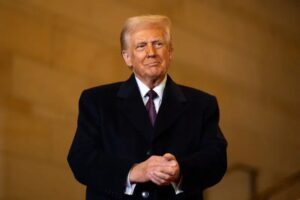 Washington, D.C. – January 31, 2025 – Former U.S. President Donald Trump has renewed his warning to impose 100% tariffs on exports from BRICS nations—Brazil, Russia, India, China, and South Africa—if they move forward with efforts to replace the U.S. dollar as the dominant global reserve currency.
Washington, D.C. – January 31, 2025 – Former U.S. President Donald Trump has renewed his warning to impose 100% tariffs on exports from BRICS nations—Brazil, Russia, India, China, and South Africa—if they move forward with efforts to replace the U.S. dollar as the dominant global reserve currency.
Trump made the statement in a post on his social media platform, Truth Social, emphasizing that any attempt by BRICS to introduce an alternative currency for international trade would lead to severe economic consequences for those nations. The warning follows increasing discussions among BRICS members about reducing their reliance on the dollar, a move that could reshape global financial markets.
“If BRICS countries try to replace the U.S. dollar, they will face a 100% tariff on their exports to America,” Trump stated, underscoring his commitment to defending the dollar’s global dominance.
This latest threat aligns with Trump’s broader trade policies, which have included significant tariff proposals targeting U.S. trading partners. Recently, he announced a 25% tariff on imports from Canada and Mexico, set to take effect on February 1, 2025, citing concerns over illegal immigration and drug trafficking.
The BRICS alliance has been exploring financial mechanisms to bypass the dollar in trade settlements, arguing that reliance on the U.S. currency exposes their economies to American monetary policy and sanctions. The group has already initiated steps to increase trade in their national currencies and has discussed the possibility of launching a new BRICS-based currency.
Trump’s warning signals the potential for escalating economic tensions between the U.S. and BRICS nations. Analysts caution that implementing such tariffs could disrupt global trade, increase costs for American consumers, and prompt retaliatory measures from affected countries, further straining international economic relations.
As discussions within BRICS continue, the global economic landscape remains uncertain, with potential ramifications for trade policies and currency markets worldwide.




